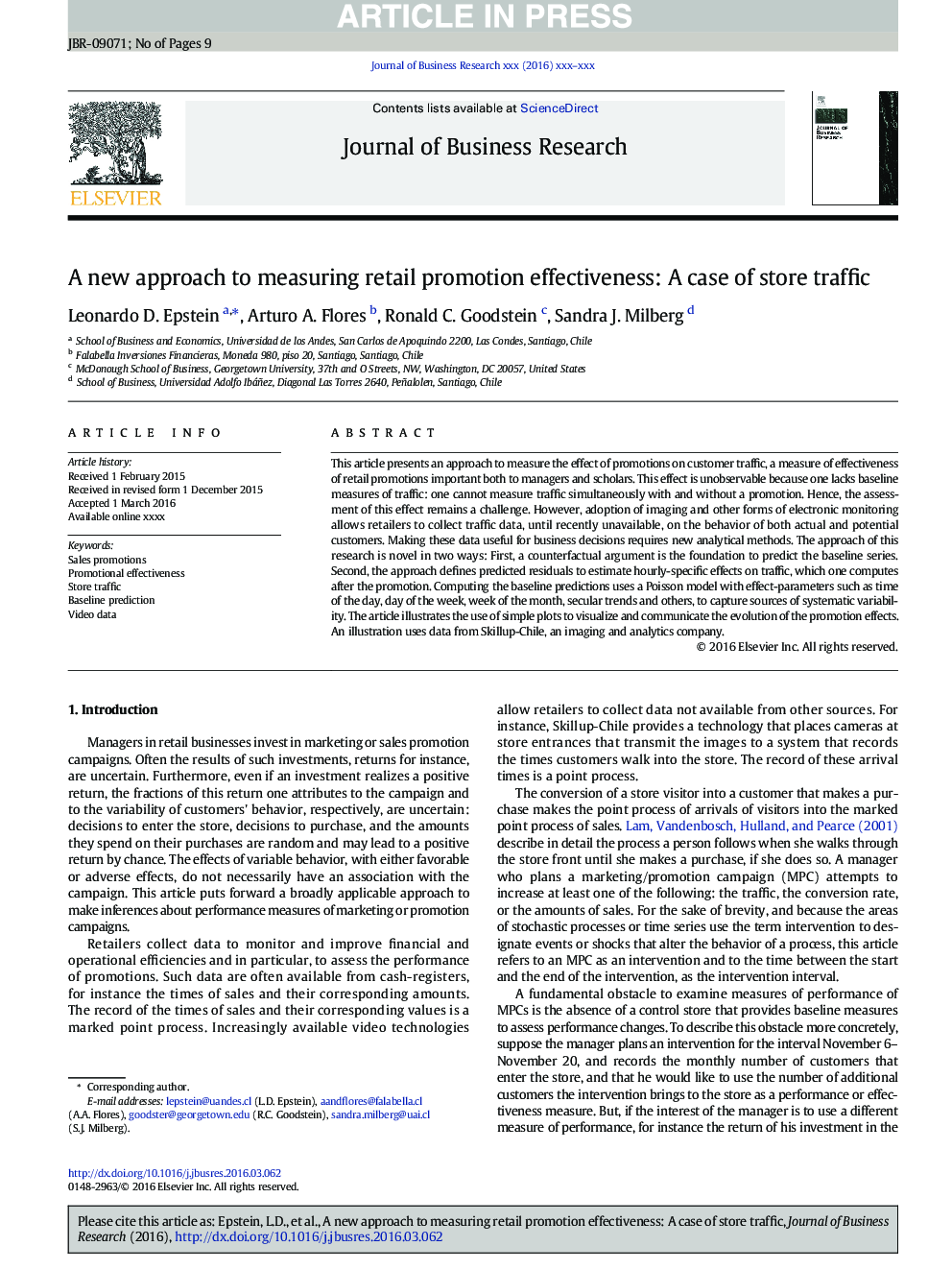| Article ID | Journal | Published Year | Pages | File Type |
|---|---|---|---|---|
| 5109894 | Journal of Business Research | 2016 | 9 Pages |
Abstract
This article presents an approach to measure the effect of promotions on customer traffic, a measure of effectiveness of retail promotions important both to managers and scholars. This effect is unobservable because one lacks baseline measures of traffic: one cannot measure traffic simultaneously with and without a promotion. Hence, the assessment of this effect remains a challenge. However, adoption of imaging and other forms of electronic monitoring allows retailers to collect traffic data, until recently unavailable, on the behavior of both actual and potential customers. Making these data useful for business decisions requires new analytical methods. The approach of this research is novel in two ways: First, a counterfactual argument is the foundation to predict the baseline series. Second, the approach defines predicted residuals to estimate hourly-specific effects on traffic, which one computes after the promotion. Computing the baseline predictions uses a Poisson model with effect-parameters such as time of the day, day of the week, week of the month, secular trends and others, to capture sources of systematic variability. The article illustrates the use of simple plots to visualize and communicate the evolution of the promotion effects. An illustration uses data from Skillup-Chile, an imaging and analytics company.
Keywords
Related Topics
Social Sciences and Humanities
Business, Management and Accounting
Business and International Management
Authors
Leonardo D. Epstein, Arturo A. Flores, Ronald C. Goodstein, Sandra J. Milberg,
